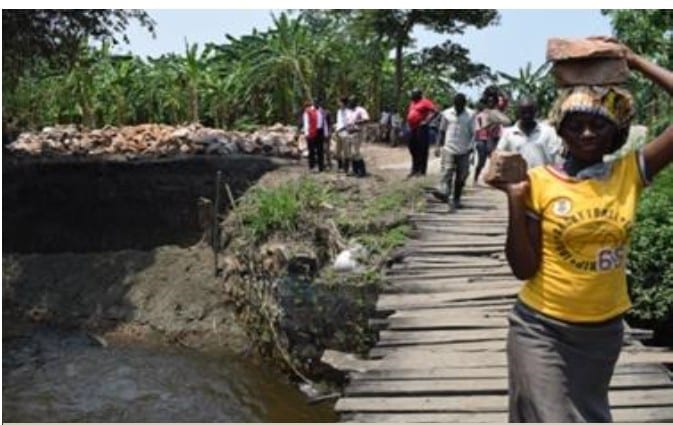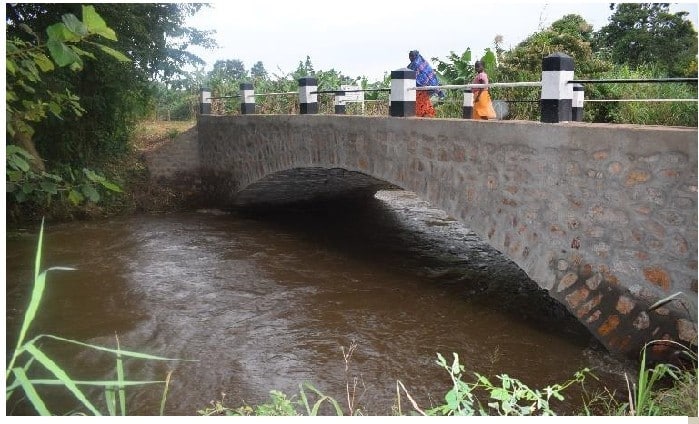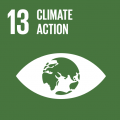The impact of climate change has had an immediate effect on Ugandans, and this effect is anticipated to worsen in the future. The UN Food and Agriculture Organisation (FAO) has attributed the drop in Uganda’s economic growth primarily to the variability of the weather and its impact on agriculture, a key sector in Uganda’s economy.
Within rural communities, the devasting effects of climate change is ruining livelihoods, threatening food security, economic stability, and increasing poverty. In May 2020, floods washed away homes and property in the Kasese District in southwestern Uganda (located at the foothills of Mt Kilimanjaro). The main hospital was damaged, and the floods resulted in at least 8 reported deaths. An estimated 173,000 people were affected in total. Children have not escaped the impact of these natural disasters, with many suffering from a lack of food, adequate housing, and social instability.
Safeguarding development from disasters
As the Head of Child Protection and Child Rights Governance at Save the Children in Uganda, I worked with National Resilience Coordinators such as Gilbert Atuhe, community members, children and local leaders to help build community resilience against the shocks of natural disasters. It is important that children are included in this work as key members of their communities, and so Save the Children’s climate change and disaster risk reduction (DRR) programmes include youth-centred approaches. The programmes are guided by Uganda’s National Development Plan 2, and the Sendai Framework for DRR 2015-2030, which provides UN member states with targets and priorities for action to prevent new and reduce existing disaster risks.
The programmes have three youth-centred pathways through which we implement and mainstream climate change adaptation and disaster risk interventions. The pathways include comprehensive school safety, using the Safe Schools approach, child and community-centred disaster risk reduction initiatives, and life skills for youths and adolescents.
The Safe Schools approach
Many children are not safe in and around school. Children’s safety is threatened by violence, natural and everyday hazards, and conflict which affects their learning and wellbeing. The Safe Schools Common Approach (SSCA) draws from decades of experience, learning, and research from across the globe and is developed from evidence in and beyond Save the Children International (SCI). It brings together proven interventions, such as comprehensive school safety, that address challenges facing children in and around school. The SSCA is an all-inclusive, all-hazards approach which empowers boys and girls to stay safe.
The SSCA focuses on keeping children protected at, and when travelling to and from school, and improves their right to education and protection. It seeks to raise awareness amongst children of the immediate risks they may face, such as those related to child protection, as well as Disaster Risk Reduction (DRR) and climate change adaptation. Through extra-curricular activities, children are encouraged to participate in hazard, vulnerability, and capacity assessments to identify risks and mitigation measures for risks which may affect their learning and safety.
The inclusive risk analysis and planning enables children of all ages and abilities to inform teachers, parents, and caregivers of any risks they identify which have the potential to affect their personal safety, school environment and investments. Investments at risk from disasters include buildings, reading materials, and other important school activities such as gardening, which boosts child awareness of nutrition and food production.
In Kasese District, 30 DRR Clubs have been established. Each club comprises 20 members who are now trained on disaster preparedness, risk mitigation, and disaster management responses. Members have conducted community outreach activities, such as music, dance, and drama shows, to raise awareness of disaster risks and psychological first aid to better enable community members to support each other.
Through the outreach work of the clubs, children have been informed of the dangers of climate change. Children and protection and safety of their community by reporting concerns to community members. Community members, with support from the local leadership, commit to their participation in the school safety calendar by getting involved in different child-led activities, such as levelling and clearing the school compound, contributing to mid-day meals and gardening for school feeding. Informed and empowered parents also play a significant role in detecting, prevention and reporting child rights violations to the existing authorities, such as the Child Protection Committee (CPC).
Community members, with support from the local leadership, commit to their participation in the school safety calendar by getting involved in different child-led activities, such as levelling and clearing the school compound, contributing to mid-day meals and gardening for school feeding. Informed and empowered parents also play a significant role in detecting, prevention and reporting child rights violations to the existing authorities, such as the Child Protection Committee (CPC).

Kasese District, Uganda.
Before: The old wooden bridge became unsafe due to floods…

After: …So community members worked together to build a new, improved bridge
Saving lives
Child and community-centred disaster risk reduction initiatives have empowered communities and children to assess the risks, vulnerabilities, and capacities to adapt to and mitigate climate-related shocks. SCI has enabled children’s clubs in 30 schools to participate in climate change mitigation through tree planting and sustainable riverbank management practices for flood mitigation. By collaborating with the District Disaster Management Committee (DDMC) and the Uganda Red Cross Society, Save the Children has trained school management committees and DRR clubs in early warning risk prevention messages and response drills on evacuation and first aid to save lives.
During the latest floods in May 2020, the Village Disaster Management Committees (VDMC) of Kasese District (having been trained in risk mitigation and the development of contingency plans and early warning signs) were able to save lives when the river banks burst. The VDMC, through the use of megaphones, community radios, and loudspeakers, sounded alarms late in the night that enabled people to rush to pre-identified safe zones and evacuation sites in schools and churches. VDMC located children who had been separated from their families and ensured they reached safety and were reunited with their families and relatives.
Boosting food productivity
In addition, through collaboration with district technical persons, climate-smart agricultural practices have been mainstreamed in school gardening activities and shared with caretakers and parents to improve food productivity at home. Parents now harvest greens and vegetables planted in their backyards, while schools boost school meals with vegetables from the school gardens. This not only provides additional nutritional supplements, but also equips schoolchildren with agricultural skills for the future, with the awareness that the agriculture sector involves around 90% of Uganda’s workforce.
Through DRR interventions, young people aged between 10 and 24 years have been trained in life skills, including social, communication, and vocational skills, to enable vulnerable youth to cope with the shocks that come with the effects of climate change, such as reduced food intake, domestic violence, psychological trauma, and physical injuries. Life skills training has provided foundational competencies to identify, plan, and kick-start alternative livelihood sources which are critical for building resilience to climate related shocks at the household level. In Kasese, groups of over 100 young people have been supported to grow crops such as watermelon and passionfruit, which they are able to sell to complement household income.
Empowering communities
If sustainable measures are not put in place to mitigate some of the drivers of climate change, then the future remains worrying. Drastic climate change will have a grave impact on lives, ranging from the displacement of people, the destruction of property and infrastructure, the separation of children from parents, and the washing away of farming land.
The plan for Save the Children’s resilience and DRR interventions is to empower communities to practice climate-smart agriculture and improve farming methods, to strengthen the capacity of VDMCs to better coordinate with government disaster management plans, and also advocate to government to resource these small, but powerful units at the grassroots level, given the real-time role they place in monitoring and alerting communities when disasters strike.
Lastly, we seek to continue to empower children and provide platforms for them to raise issues, discuss the impact of climate change on their lives, and equip them with the most relevant skills to be able to respond in simple but significant ways.
At the time of printing, Margaret and Gilbert have both taken up new posts with Save the Children. Margaret is now a Child Protection in Emergencies Specialist based in Mozambique and Gilbert coordinates the U-learn Project.



![ATIMANGO,_Margaret-_headshot_2[1] Headshot of Margaret Atimango](https://cscuk.fcdo.gov.uk/wp-content/uploads/2021/02/ATIMANGO_Margaret-_headshot_21.jpg)
